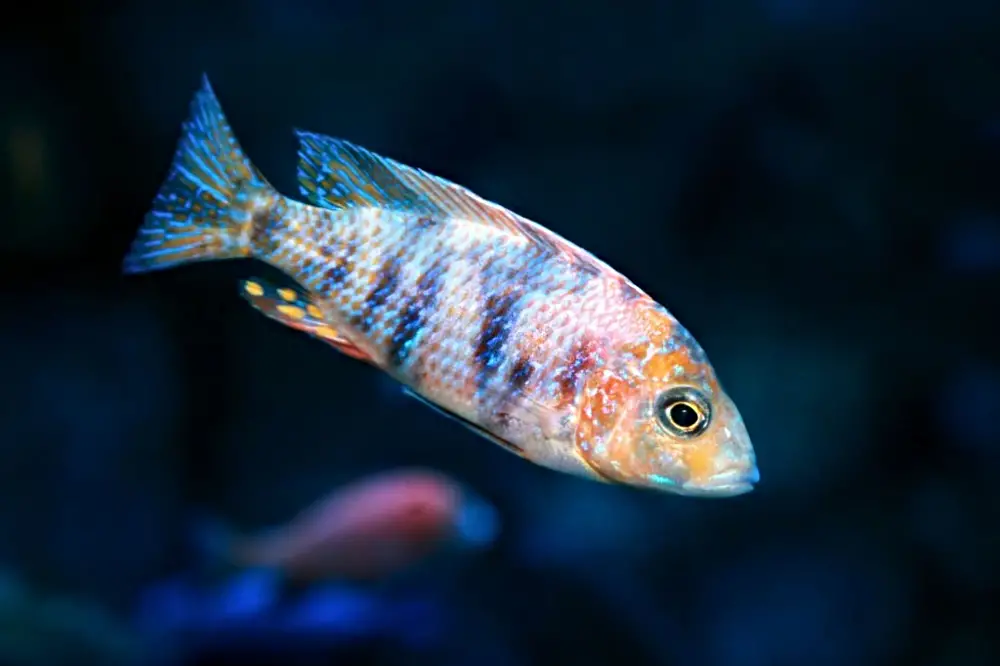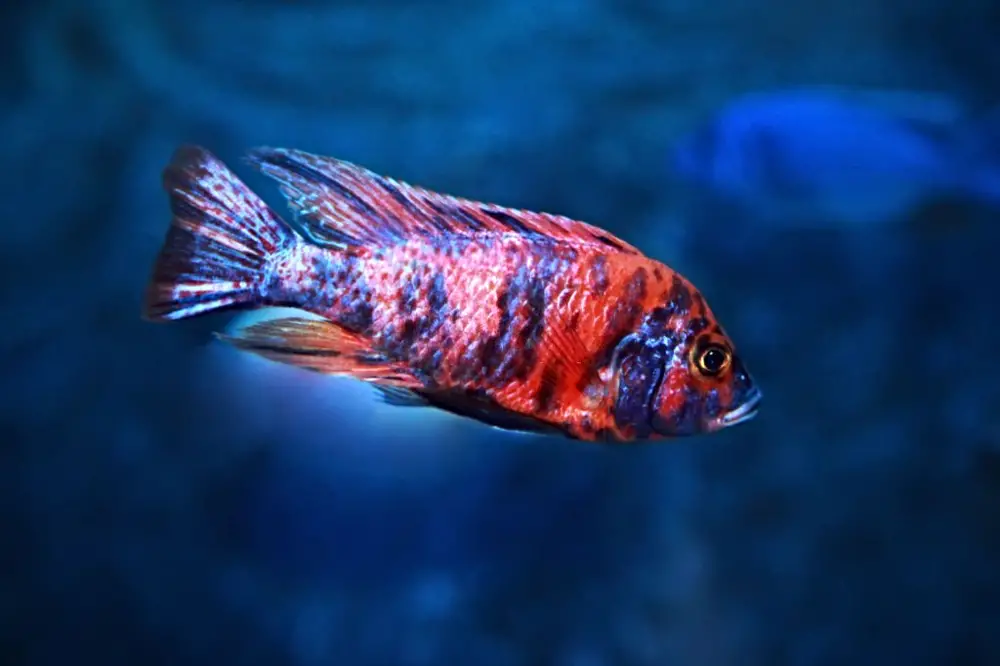How to Master the Art of African Cichlid Breeding for Stunning Colors
Are you a fan of colorful African Cichlids and wondering how to breed them to achieve stunning colors? African Cichlid breeding can be a rewarding experience, but it requires patience and a good understanding of genetics.
As a fish-keeping enthusiast, you want your fish to stand out in your aquarium, and breeding them for vibrant colors can achieve just that. In this blog, we’ll provide you with tips for breeding African Cichlids with stunning colors and how to master the art of African Cichlid breeding. So, let’s dive into the world of African Cichlids and explore the secrets of breeding colorful fish!
Understanding African Cichlid Genetics
If you want to breed African Cichlids with stunning colors, you first need to understand the basics of African Cichlid genetics. Breeding for color involves understanding how coloration patterns are inherited and selecting the best parents to produce the desired offspring.
African Cichlids exhibit a wide range of colors and patterns, including solid colors, stripes, spots and blotches. These coloration patterns are determined by multiple genes, making the breeding process complex. Additionally, the environment can also influence coloration, such as water temperature and pH.
When breeding for color, it’s important to understand the different types of inheritance patterns. For example, some coloration patterns are dominant, meaning that if a fish has one copy of the gene, it will display the pattern. Other patterns are recessive, meaning that a fish must have two copies of the gene to display the pattern.
By selecting parents with the desired coloration patterns and understanding the inheritance patterns, you can increase the likelihood of producing offspring with the desired colors. However, it’s important to note that not all offspring will display the desired colors, as genetics is not always predictable.
Also, there are external factors to consider about African Cichlids’ colors.
Selecting the Right Breeding Pair
When it comes to breeding African Cichlids for stunning colors, selecting the right breeding pair is crucial. Not only do you want to select fish with desirable coloration patterns, but you also want to ensure genetic diversity and compatibility.
- Healthy and mature fish: Firstly, it’s important to choose healthy and mature fish for breeding. Look for fish that are active, have a good appetite and show no signs of disease or deformities. Next, consider the coloration patterns of each fish and determine if they have the desired colors you are looking to produce in their offspring. Select fish with vibrant and distinct colors, as they are more likely to pass those genes onto their offspring.
- Genetic diversity: Additionally, genetic diversity is key to breeding healthy and colorful African Cichlids. Avoid breeding siblings or closely related fish to prevent inbreeding depression. Instead, choose fish from different bloodlines to increase genetic diversity.
- Compatibility: Finally, consider the compatibility of the breeding pair. African Cichlids can be aggressive towards each other, so it’s important to choose fish that have compatible personalities. Observe their behavior towards each other and ensure they do not fight or display aggressive behaviors.
By taking the time to choose the right pair, you can increase your chances of producing stunningly colored offspring. But what if you’re African Cichlids are changing colors? Learn more in our blog: Why Do African Cichlids Change Colors?
Now that you’ve selected your breeding pair, it’s time to set up a breeding tank. Check out how we revived an old tank into a new Lemon Jack breeding tank:
Breeding Techniques
Breeding African Cichlids for stunning colors requires the right breeding environment and techniques. There are a few methods for breeding African Cichlids, including mouthbrooding and substrate spawning.
Mouthbrooding
Mouthbrooding is a common breeding technique for African Cichlids, where the female fish will hold fertilized eggs in her mouth until they hatch. To breed mouthbrooders, you will need to provide them with a suitable breeding environment, such as a separate breeding tank with a suitable substrate and hiding places. Once the female fish lays her eggs, she will pick them up and carry them in her mouth. It’s important to keep the breeding tank clean and provide high-quality food for the breeding pair.
Check out how we stripped our female African Cichlids. (Stripping is the removal of eggs or fry from the mouth, of brooding females before the incubating period has finished.):
Substrate Spawning
Another method is substrate spawning, where the fish lay their eggs on a substrate such as rocks or sand. To breed substrate spawners, you will need a separate breeding tank with a suitable substrate and hiding places. The breeding pair will lay their eggs on the substrate, and you can remove the eggs and place them in a separate hatching tank. Keep the hatching tank clean and provide high-quality food for the fry.
To enhance the colors of your African Cichlids, it’s important to select the right breeding pair with desirable coloration patterns, genetic diversity and compatibility. Ensure they have a suitable breeding environment with appropriate water parameters, such as temperature and pH. Also, provide high-quality food and keep the breeding tank clean.
In summary, breeding techniques such as mouthbrooding and substrate spawning can be used to breed African Cichlids for enhanced colors. Selecting the right breeding pair and providing a suitable breeding environment are key factors in successful breeding. By following these steps, you can master the art of African Cichlid breeding and produce stunningly colored offspring.
Raising the Fry
Raising African Cichlid fry is an exciting and rewarding experience, but it also requires careful attention to ensure optimal coloration. To raise healthy and colorful African Cichlid fry, it’s important to provide them with a suitable environment, high-quality food and proper maintenance.
- Environment: When the fry hatch, it’s important to provide them with a clean and safe environment. You can use a separate hatching tank or partition the main tank to protect the fry from adult fish. Provide plenty of hiding places, such as rocks or plants, for the fry to hide in and feel secure.
- Nutrition: Feeding is also crucial for the healthy growth and coloration of the fry. Feed them small, frequent meals of high-quality food, such as freshly hatched brine shrimp or specially formulated fry food. As they grow, you can gradually increase the size of the food and frequency of feeding.
- Maintenance: Regular water changes and tank maintenance are also essential for healthy fry. Perform partial water changes of 25% to 50% every week to maintain water quality and remove excess waste. Monitor water parameters, such as temperature and pH and adjust as necessary to keep the environment stable.
In conclusion, raising African Cichlid fry requires careful attention and maintenance, but the rewards are well worth it. Provide a suitable environment, high-quality food and proper maintenance to ensure optimal coloration and healthy growth. By following these tips, you can master the art of African Cichlid breeding for stunning colors.
So now you’re fry have grown up a little — it’s time to upgrade their environment. Check out how we upgraded our fry tank:
Identifying and Selecting for Desired Traits
To master the art of African Cichlid breeding for stunning colors, it’s essential to identify and select desired coloration traits. This involves careful observation of the fish and their offspring, as well as strategic breeding to enhance the desired traits.
When selecting desired coloration traits, it’s important to first understand the different color patterns and their inheritance. Some color patterns, such as solid or striped, are dominant and are more likely to be expressed in the offspring. Others, such as spotted or blotched, are recessive and may only appear in certain combinations.
To selectively breed for desired coloration traits, start by identifying the fish with the most desirable traits. Look for bright, bold colors and patterns that are distinct and eye-catching. These traits can then be enhanced through strategic breeding. For example, breeding two fish with similar coloration can produce offspring with more intense coloration. Alternatively, breeding a solid-colored fish with a spotted or blotched fish can produce offspring with a unique combination of color patterns.
Selective breeding should be done carefully and over time to ensure genetic diversity and avoid inbreeding. By selectively breeding for desired traits, you can enhance the coloration of your African Cichlids and create stunning and unique specimens.
Understanding Genetic Markers
Understanding genetic markers is crucial for enhancing coloration in African Cichlids. A genetic marker is a variation in the DNA sequence that can be used to identify and track specific traits. By identifying and selecting for specific genetic markers, breeders can enhance desirable traits in their fish.
One example of a genetic marker for coloration in African Cichlids is the gene responsible for the expression of melanin. Melanin is a pigment that gives fish their black, brown and gray coloration. By selecting fish with a specific variation of this gene, breeders can enhance the intensity and brightness of these colors.
Another genetic marker that can be used to enhance coloration is the gene responsible for the expression of iridophores. Iridophores are cells that contain reflective pigments, which give fish their metallic or iridescent coloration. By selecting fish with a specific variation of this gene, breeders can enhance the intensity and variety of these colors.
It’s important to note that genetic markers are just one tool in the breeder’s arsenal. Other factors, such as environmental conditions and diet, can also impact coloration. However, by using genetic markers in combination with other breeding techniques, breeders can produce colorful African Cichlids with stunning and unique color patterns.

Take Your African Cichlid Breeding to the Next Level
Breeding colorful African Cichlids is an art that requires a good understanding of genetics, selective breeding and proper care techniques. By selecting the right breeding pairs, using appropriate breeding techniques and raising fry in optimal conditions, fish-keepers can achieve stunning colors in their African Cichlid tanks.
At KaveMan Aquatics, we offer 1-on-1 coaching for all things about African Cichlids. We can provide personalized guidance and support to help you achieve your goal of breeding colorful African Cichlids. Don’t hesitate to contact us online for more information on our coaching services.Take your African Cichlid breeding to the next level and create a stunning, colorful aquarium that will impress everyone who sees it.
-
How to Master the Art of African Cichlid Breeding for Stunning Colors
Learn how to master the art of African Cichlid breeding for stunning colors! Enhance your fish-keeping skills with our expert tips and techniques.







